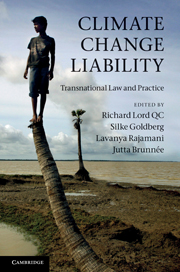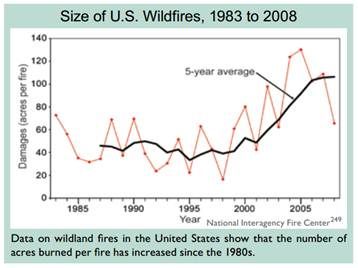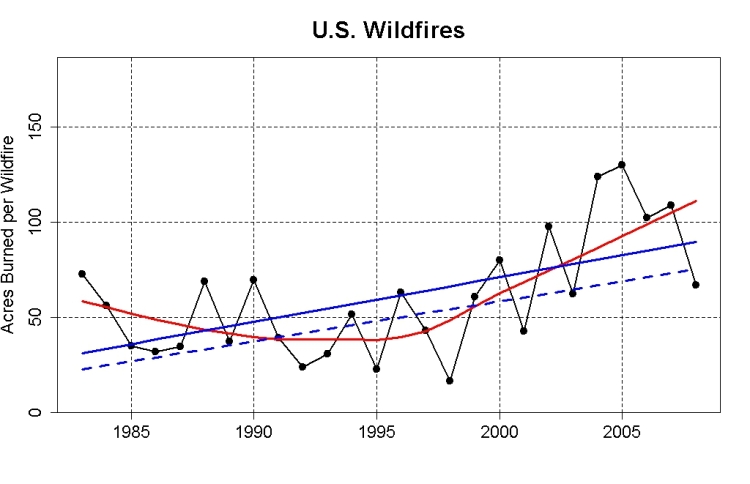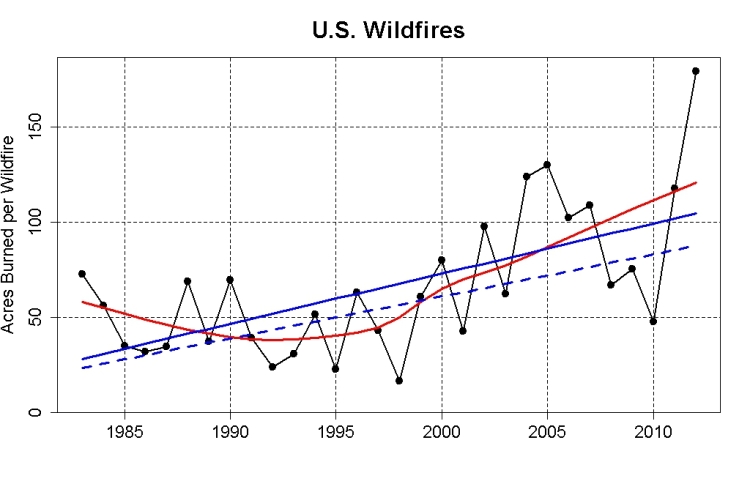by Donald A. Brown, Ethics and Climate, January 30, 2013
I. Introduction. The French philosopher Diderot said that skepticism in all things is the first step on the road to the truth. Although responsible scientific skepticism about climate change science is a good thing that should be encouraged, as we have written about frequently on Ethicsandclimate.org, there has been a well-organized, well-funded disinformation campaign about the science of climate change that has used tactics that are deeply ethically reprehensible. In this entry we continue to explore how society should classify this very harmful development.
The tactics deployed by this campaign are now all well documented in the books and peer-reviewed sociological literature identified in the Appendix to this article. The tactics used by the climate change disinformation campaign have included the following ethically abhorrent tactics:
- Lying or reckless disregard for the truth
- Cherry picking the science
- Cyber-bullying and ad hominem attacks on scientists and journalists
- Manufacturing bogus, non-peer-reviewed science in ideological organized conferences and publications that don’t subject conclusions to peer-review
- The use of ideological think tanks to promote the views of ideological skeptics
- The use of front groups and fake grass-roots organizations known as Astroturf groups that hide the real parties in interests
- Specious claims about “bad science” that are based upon the dubious assumption that no conclusions in science can be made until everything is proven with high levels of certainty
These tactics obviously do not constitute responsible scientific skepticism but disinformation, misinformation, propaganda, and even intimidation in the case of cyber-bullying.
EthicsandClimate.org has described this disinformation campaign in a four part paper series and a three part video series that has examined these ethically abhorrent tactics in considerable detail.
The four part written series can be found at:
The three part video series can be found at:
 In this entry we continue to examine how we should classify this kind of disinformation, an important question because the disinformation campaign is, we believe, a new kind of assault on humanity which raises questions about how we should classify it and how society should sanction disinformation about potentially very harmful human behavior. We first examine the basis for claiming that the disinformation campaign is a crime against humanity.
In this entry we continue to examine how we should classify this kind of disinformation, an important question because the disinformation campaign is, we believe, a new kind of assault on humanity which raises questions about how we should classify it and how society should sanction disinformation about potentially very harmful human behavior. We first examine the basis for claiming that the disinformation campaign is a crime against humanity.
II. Crime Against Humanity
Because the international community has lost over twenty years in developing an adequate solution to climate change, a matter discussed in considerable detail in this writer’s recent book Climate Change Ethics, Navigating the Perfect Moral Storm,in no small measure due to the climate change disinformation campaign and given that the international community is now running out of time because of this delay to prevent dangerous climate change, the disinformation campaign is likely responsible for huge quantities of human suffering. That is this delay is causing or increasing the severity of droughts, floods, adverse human health impacts, intense storm damage, and heat related deaths among others adverse impacts. Without doubt the failure to act in the last twenty years is putting hundreds of millions of people at great risk including some the world’s poorest people and the ecological systems on which their lives depend.
Given the scale of these impacts, what sense can be made of a claim that the tactics of the disinformation campaign (to be distinguished from responsible scientific skepticism) is some new kind of crime against humanity.
Crimes against humanity are understood to be grave offenses that are part of a widespread or systematic attack against a civilian population.
In 2002, the International Criminal Court (ICC) was established in The Hague (Netherlands) and the Rome Statute provides for the ICC to have jurisdiction over genocide, crimes against humanity, and war crimes. The definition of what is a “crime against humanity” are contained in Article 7 of the Rome Statute which says that:
For the purpose of this Statute, “crime against humanity” means any of the following acts when committed as part of a widespread or systematic attack directed against any civilian population, with knowledge of the attack: (a) Murder; (b) Extermination; (c) Enslavement; (d) Deportation or forcible transfer of population; (e) Imprisonment or other severe deprivation of physical liberty in violation of fundamental rules of international law; (f) Torture; (g) Rape, sexual slavery, enforced prostitution, forced pregnancy, enforced sterilization, or any other form of sexual violence of comparable gravity; (h) Persecution against any identifiable group or collectivity on political, racial, national, ethnic, cultural, religious, or gender, or other grounds that are universally recognized as impermissible under international law, in connection with any act referred to in this paragraph or any crime within the jurisdiction of the Court; (i) Enforced disappearance of persons; (j) The crime of apartheid; (k) Other inhumane acts of a similar character intentionally causing great suffering, or serious injury to body or to mental or physical health.
Thus far only these very odious acts have been recognized as crimes against humanity. Furthermore only crimes that have been committed in nations that have consented to the jurisdiction of the International Criminal Court (ICC) may be prosecuted in the ICC. Because the United States has not consented to the ICC and many of the activities of the disinformation campaign have taken place in the United States, it is not likely that fossil fuel companies who have participated in in the disinformation campaign could be prosecuted for a crime against humanity even if the court construes the tactics of the disinformation campaign as “inhumane acts of a similar character intentionally causing great suffering.” Furthermore it is not clear that the disinformation campaign constitutes a “systematic attack against a civilian population” as defined in the ICC statute. Therefor although the disinformation campaign can be understood as a new kind of assault on humanity, it does not obviously fit the definition of crime against humanity under the ICC.
And so, although a strong case can be made that the intentional acts of those participating in the disinformation campaign are metaphorically some kind of new crime against humanity, it is not likely that these acts would be construed to be legally prosecutable as crimes against humanity under existing international law.
Before accusing someone of a crime, it is also necessary to be able to prove that they knew or should have known that that they were misleading people in ways that could cause damage or harm. One might ask whether anyone engaging in the tactics discussed in this series on the disinformation campaign is ethically blameworthy. Some skeptics, for instance, who engage in the ethically dubious practice of stressing unknowns while ignoring the large body of well-settled science are simply expressing their opinions or their interpretations of what they know about the science. If people have a right to free speech, it follows that people should be able to express their views on climate science freely, even if their views are based upon incomplete knowledge of the peer-reviewed science on which the consensus view has been based.
Yet there is abundant evidence that some of those participating in climate change disinformation campaign were being advised by scientists advising them that the mainstream scientific view was entitled to strong scientific respect, yet they persisted in spreading claims that there was no scientific basis for concern about human-induced climate change.
Furthermore, those funding the disinformation campaign consistently funded organizations and individuals that were regularly making demonstratively false claims about the state of climate change science or claims made in reckless disregard for the truth.
And so, some of the activities of those engaged in the disinformation campaign could likely be prosecuted on criminal grounds provided a court had jurisdiction to make criminal determinations in such matters under a law that criminalized known false claims about very dangerous behavior. Given the immensity of the harm from the climate change disinformation campaign, a case can be made that new laws criminalizing disinformation on matters as dangerous as climate change are warranted where the disinformation is transmitted to protect economic interests.
III. Civil Liability Under Common Law for Disinformation
A tort is a violation of civil duties, that is a tort, in common law jurisdictions, is a civil wrong. Tort law deals with situations where a person’s behavior has unfairly caused someone else to suffer loss or harm. A tort is not necessarily an illegal act but an act that causes harm. The law allows anyone who is harmed to recover their loss.
We begin with a specific case, Kivalina vrs ExxonMobil Corporation, because although this case has now been dismissed, the plaintiffs in this case set out in the complaint assertions they claimed they could prove about the actions of the defendants actions, the majority of which were fossil fuel companies, that are are relevant to to the disinformation campaign.
Kivalina v. ExxonMobil Corporation, et al. is a lawsuit filed on February 26, 2008 in a US district court asking for climate change damages from flooding to the Alaskan village of Kavalina. This case has subsequently been dismissed by the US Court of Appeals for the Ninth Circuit in October of 2012 on the basis that climate change raises political issues that need to be decided by legislative action rather than by a court.
Nevertheless, the allegations made by the plaintiff, an Alaskan village, asserted that some of the defendants including ExxonMobil Corporation, BP America, Inc., Chevron Corporation, ConocoPhillips Company, Peabody Energy Corporation, American Electric Power Company, Inc, Duke Energy Corporation, and The Southern Company, conspired to misinform the public on the science of climate change either individually or through their various front groups or industry trade associations. The complaint in this case further asserted that the object of the conspiracy was to create unwarranted doubts about the existence of global warming and its causes among the public and that the defendants did this to protect their economic interests.
The plaintiffs also claimed that some of the defendants have conspired to mislead the public about the science of global warming creating flooding harms to the Village of Kivalina.
The plaintiffs alleged that the defendants also funded “front groups,” including ƒƒphony citizens’ organizations and bogus scientific bodies, to regularly publish views expressing doubts about global warming in mainstream publications such as the Wall Street Journal. The plaintiffs also alleged that the defendants funded and circulated misleading advertising which questioned the “science” of global warming and human causation. The plaintiffs also alleged that defendants coordinated a “skeptics campaign” that include funding for energy industry groups and other public policy organizations which voiced skepticism regarding global warming, creating the appearance of numerous independent voices speaking out against global warming.
The plaintiffs further claimed that the defendants engaged in a civil conspiracy by ƒƒand through agreements to participate in the intentional creation, contribution to and/or maintenance of a public nuisance through global warming by undermining the public’s understanding of climate change science.
The plaintiffs also alleged that the fossil fuel companies were being told by scientists that were advising them that climate change was a serious threat, yet they continued to fund projects which sought to undermine the science.
The court finally dismissed the case on the ground that the “the solution to Kivalina’s dire circumstances must rest in the hands of the legislative and executive branches of our government, not the federal common law.” Kivalina may be the last blow for parties that are seeking to address climate change via the federal common law. Kivalina was the last in a series of cases seeking to recover damages from climate change under theories of liability for a public nuisance. These other cases also have been dismissed on the grounds that climate change liability is a matter that must be resolved by legislatures not courts. The opinion in the Kivalina case makes it clear that both abatement actions and monetary damage actions pertaining to greenhouse gas emissions have been displaced by the Clean Air Act. Most observers have concluded that public nuisance litigation in the future will likely be litigated in the states, where common law public nuisance actions are still viable although efforts to address climate change via state common law have been unsuccessful (at least so far).
The apparent reasoning followed by the court in this case is that there is no right to damages from climate change under the theory of public nuisance in federal courts because climate change emissions now must be regulated under the federal Clean Air Act. In other words, federal statutory law has preempted the way in which greenhouse gas emissions will be regulated and the penalties that will be allowed for excess emissions. Such a decision is not understood to conclude that the defendants have not been harmed by the conspiracy of the defendants to mislead the public, only that there is no right to recover damages from this harmful behavior in US federal courts using common law tort theories.
And so the tactics employed by fossil fuel companies to undermine the public’s understanding of mainstream scientific conclusions about climate change may be a wrong without a civil remedy for damages under common law, at least in the United States. It is not clear, however, that civil liability for disinformation may not be adjudicated in courts outside the United States. Only time will tell.
Because climate change damages are likely to be so catastrophic for some people in some places, a case can be made that governments should create statutes that would impose severe financial penalties on parties that spread false information about very harmful behavior such as spreading misinformation about climate change.
Part II in this series will look at other legal theories for responding to the disinformation including human rights theories.
IV Conclusion
Thus far we have shown that although the climate change disinformation campaign is equal in destructive power to many human activities that are classified as crimes against humanity, yet the current international legal regime for prosecuting crimes against humanity does not provide an adequate remedy for climate change caused damages that have been caused by those participating in the disinformation campaign. This is so despite the fact that there is strong evidence that at least some of those participating in the disinformation campaign knew or should have known that they were spreading false information about the enormous threat of climate change and did so to protect economic interests.
We have also seen, there appears to be no civil law remedy for damages that tens of millions will experience at least in part because of tactics of the disinformation campaign. Yet a strong case can be made that there should be some civil legal remedy for those who have been harmed by the those responsible for the disinformation campaign.
http://blogs.law.widener.edu/climate/2013/01/30/the-climate-change-disinformation-campaign-what-kind-of-crime-against-humanity-tort-human-rights-violation-malfeasance-transgression-villainy-or-wrongdoing-is-it-part-one-is-the-disinformati/



















